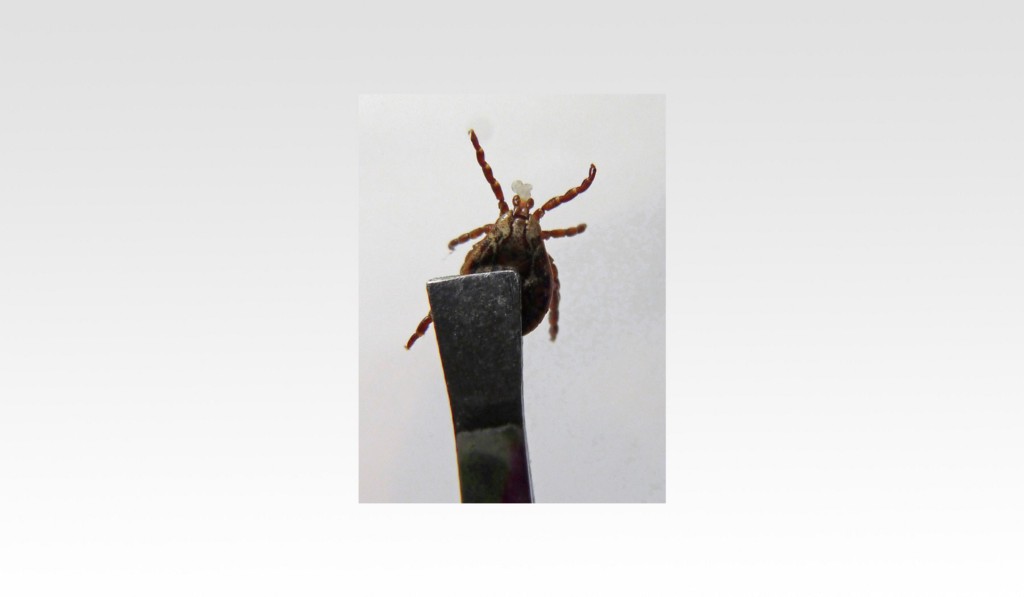Tabernacle resident leading the charge for Lyme disease awareness

Eileen Valerio, a Tabernacle resident and nurse at Larchmont Elementary School in Mt. Laurel, has seen the effect that Lyme disease has had on her family.
Unfortunately, the Valerios’ story is one that can be recounted by some families in New Jersey. The state ranks second in the country for the number of Lyme disease cases. In 2015, the Centers for Disease Control and Prevention reported 258 cases of Lyme disease just in Burlington County. From 2010 to 2015, 1,158 cases of Lyme disease was reported in the county.
With a lot of wooded areas in and around Tabernacle, prevention and awareness are two key components in avoiding the disease.
“My brother Tommy lived in Pennsylvania,” Valerio said. “He was training on a wooden path in the Poconos. Pennsylvania has the highest amount of cases of Lyme disease in the country. Instead of getting stronger, he was telling doctors that he felt he was getting weaker. Over the next two years, his health spiraled out of control. He had difficulty swallowing and balance issues. He even developed a slow heart rate over the span of two years. When he stood up, he would pass out because his blood pressure would crash. His legs felt like they were in cement blocks, and he had a purple rash that went up both legs.
“We went from doctor to doctor, and no one could figure out what was wrong. Before long, he was confined to a wheelchair. We went to the best hospitals in Philadelphia and New York. We went to see neurologists, experts in infectious diseases. Given his history of training on a wooded path and getting weak, Lyme disease should have been the first thing that was clinically diagnosed. It wasn’t. He ended up passing away from respiratory arrest.”
Before he died, Valerio and her brother had a hunch he may have had a tick-related disease. They went to a very well respected physician in Washington, D.C., who found her brother had four tick-related diseases.
“Had they diagnosed him earlier and given him antibiotics, he probably would be here today,” Valerio said.
Valerio also had her own battle against the debilitating disease.
“I went to my son’s baseball game. The next morning, I found a tick on my abdomen,” Valerio said. “I thought that because I am a nurse, I would not get worried because I would know what to look for with the symptoms. People say to look for flu-like symptoms, but honestly, I had just two hours of just flu and stomach issues and it was gone. If I didn’t connect it to the tick bite three weeks earlier, I would have never thought about it.”
Three weeks after she experienced the first symptoms, Valerio started having foot and shin pain. She also developed floaters in her eyes. It was at that moment she knew what was going on.
“I went to my doctor, and I was going to go down the same path my brother went down,” Valerio said. “They did the basic Centers for Disease Control tests. Both are inaccurate 50 percent of the time. I got a phone call from the doctor’s office stating I was negative. I was told if I wanted to follow up to see if I had Lyme disease, I had to go to an infectious disease doctor. At that point, I knew I had to see a Lyme specialist. I went to one and I was diagnosed with Lyme disease and treated. My brother saved my life.”
According to Valerio, a factor that makes Lyme disease tough to detect are the physician’s themselves cannot agree on the diagnosis. One group of doctors believes Lyme disease is rare and is easy to detect in blood tests. The other group believes it is very common and under-diagnosed and it is difficult to eradicate. The CDC is following the guidelines for the first group.
“I’m thinking about children,” Valerio said. “I had a little guy at my school who suffered from chronic pain. He was misdiagnosed. He was homebound because he suffered while he was in school. He was tested and found to have two tick-related diseases. It’s frightening because we have all of these kids who are being diagnosed with mood disorders, ADHD, learning disabilities and chronic stomach aches, and they are not clinically screened for tick-born illnesses. It’s been going on for a while and it has to change. It’s only going to get worse. To see our children being misdiagnosed is heart-wrenching.”
Valerio is trying to do her part in making sure people in the area are protected and know what to look for if they find a tick. She will be hosting an event at Larchmont Elementary School Monday, March 13 at 7 p.m.that is meant to bring awareness about Lyme disease to families and what to symptoms may occur.
“The community has to be tick aware,” Valerio added. “Perform routine tick checks on your family members. It’s critical at this point because prevention is the key. Things you can do include wearing light-colored clothing, tucking your shirt into your pants, putting your pant legs into your sock. You can even put tick repellant on. If a tick is found, it has to be removed very carefully. Grab it with fine-point tweezers as close to the skin as you can get it. You never want to grasp the body because you can cause more bacteria to go into the body. Never twist or pull a tick, pull it out gently and steadily. Also, make sure to clean the site with antiseptic. I also tell everyone to mark their calendar and put the tick in a container with a little rubbing alcohol just in case you have to start having symptoms. The earlier you get treated, the better the outcome.”


